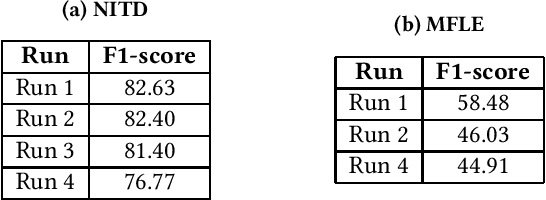Johannes Langguth
Non-Redundant Graph Neural Networks with Improved Expressiveness
Oct 06, 2023Abstract:Message passing graph neural networks iteratively compute node embeddings by aggregating messages from all neighbors. This procedure can be viewed as a neural variant of the Weisfeiler-Leman method, which limits their expressive power. Moreover, oversmoothing and oversquashing restrict the number of layers these networks can effectively utilize. The repeated exchange and encoding of identical information in message passing amplifies oversquashing. We propose a novel aggregation scheme based on neighborhood trees, which allows for controlling the redundancy by pruning branches of the unfolding trees underlying standard message passing. We prove that reducing redundancy improves expressivity and experimentally show that it alleviates oversquashing. We investigate the interaction between redundancy in message passing and redundancy in computation and propose a compact representation of neighborhood trees, from which we compute node and graph embeddings via a neural tree canonization technique. Our method is provably more expressive than the Weisfeiler-Leman method, less susceptible to oversquashing than message passing neural networks, and provides high classification accuracy on widely-used benchmark datasets.
Multi-Modal Machine Learning for Flood Detection in News, Social Media and Satellite Sequences
Oct 07, 2019
Abstract:In this paper we present our methods for the MediaEval 2019 Mul-timedia Satellite Task, which is aiming to extract complementaryinformation associated with adverse events from Social Media andsatellites. For the first challenge, we propose a framework jointly uti-lizing colour, object and scene-level information to predict whetherthe topic of an article containing an image is a flood event or not.Visual features are combined using early and late fusion techniquesachieving an average F1-score of82.63,82.40,81.40and76.77. Forthe multi-modal flood level estimation, we rely on both visualand textual information achieving an average F1-score of58.48and46.03, respectively. Finally, for the flooding detection in time-based satellite image sequences we used a combination of classicalcomputer-vision and machine learning approaches achieving anaverage F1-score of58.82%
 Add to Chrome
Add to Chrome Add to Firefox
Add to Firefox Add to Edge
Add to Edge